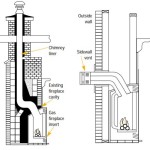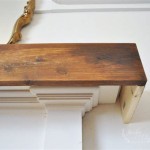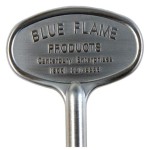Redo Brick Fireplace: A Comprehensive Guide to Restoration and Renovation
A brick fireplace serves as a focal point in many homes, offering warmth, character, and aesthetic appeal. However, over time, the brick can become weathered, stained, or simply outdated. Redoing a brick fireplace is a significant undertaking that can dramatically transform a living space. This article provides a comprehensive guide to the process, covering assessment, preparation, restoration, and renovation techniques.
Assessing the Condition of the Brick Fireplace
Before embarking on any project to redo a brick fireplace, a thorough assessment of its condition is crucial. This assessment will determine the extent of the work required and the materials needed. The examination should focus on several key areas. First, the structural integrity of the fireplace should be evaluated. Look for cracks in the brick, mortar joints that are crumbling or missing, and any signs of shifting or settling. Significant structural issues may require professional assistance to address before any cosmetic work is undertaken.
Second, the surface condition of the brick needs to be inspected. This includes identifying stains, soot buildup, paint coatings, and any other types of surface damage. The type of stain or coating will dictate the cleaning methods and products required. For example, soot buildup often requires specialized cleaning solutions, while paint may necessitate the use of chemical strippers or abrasive techniques. Moreover, efflorescence, a white, powdery deposit caused by salt migration, should be identified as it requires specific treatment.
Third, assess the surrounding area. Examine the firebox, damper, and hearth for any damage or wear. The firebox should be inspected for cracks and deterioration of the firebrick. A damaged damper can significantly reduce the fireplace's efficiency and may need to be replaced. The hearth, which is the area in front of the fireplace, should be checked for cracks, chips, and stability. Addressing issues in these areas is essential for both the aesthetics and functionality of the fireplace.
Finally, consider the overall design and style of the fireplace in relation to the surrounding room. Is the existing brick color and texture complementary to the room's décor? Does the fireplace serve as a cohesive element in the space, or does it appear outdated or out of place? This assessment will help determine the scope of the renovation project, whether it involves simply cleaning and restoring the brick, or completely altering its appearance.
Preparing the Brick Fireplace for Restoration or Renovation
Proper preparation is paramount before beginning any restoration or renovation work on a brick fireplace. This phase involves protecting the surrounding area, cleaning the brick surface, and making any necessary repairs to the mortar joints. Neglecting these steps can lead to unsatisfactory results and potential damage to the surrounding surfaces.
The first step is to protect the area around the fireplace. Cover the floor with drop cloths or plastic sheeting to prevent stains from cleaners, paint, or other materials. Secure the coverings with painter's tape to prevent them from shifting during the work. Remove any furniture or decorations that could be damaged or interfere with the project. If possible, seal off the room with plastic sheeting to contain dust and debris.
Next, thoroughly clean the brick surface. Begin by removing any loose debris, such as dust, cobwebs, or flaking paint. Use a brush, vacuum cleaner with a brush attachment, or a damp cloth to remove surface dirt. For more stubborn stains, such as soot or grease, use a specialized brick cleaner. Follow the manufacturer's instructions carefully and test the cleaner in an inconspicuous area first to ensure it does not damage or discolor the brick. Rinse the brick thoroughly with clean water after applying the cleaner and allow it to dry completely.
Once the brick is clean, inspect the mortar joints and make any necessary repairs. Remove any crumbling or damaged mortar using a chisel and hammer or a specialized grout removal tool. Be careful not to damage the surrounding bricks during this process. Once the old mortar has been removed, mix new mortar according to the manufacturer's instructions. Apply the mortar to the joints using a pointing trowel, pressing it firmly into the gaps. Smooth the mortar joints with a jointing tool to match the existing mortar profile. Allow the mortar to cure according to the manufacturer's instructions before proceeding with any further work.
Finally, consider applying a sealant to the brick surface. A sealant can help protect the brick from stains, moisture damage, and efflorescence. Choose a sealant that is specifically designed for use on brick and follow the manufacturer's instructions carefully. Apply the sealant evenly to the brick surface using a brush, roller, or sprayer. Allow the sealant to dry completely before using the fireplace.
Techniques for Restoring and Renovating a Brick Fireplace
Once the fireplace has been thoroughly assessed and prepared, the restoration or renovation process can begin. There are a variety of techniques that can be used to update the appearance of a brick fireplace, ranging from simple cleaning and sealing to more extensive modifications such as painting, staining, or adding a new surround. The choice of technique will depend on the desired aesthetic and the condition of the existing brick.
One of the simplest methods is to clean and seal the brick. This option is suitable for fireplaces that are in relatively good condition but simply need to be refreshed. Thoroughly cleaning the brick removes dirt, soot, and other surface stains, while sealing the brick helps to protect it from future damage. This technique can be used in conjunction with mortar repair to restore the fireplace to its original appearance.
Painting the brick fireplace is a popular option for those who want to completely change its appearance. Painting can transform a dark or outdated fireplace into a bright and modern focal point. Before painting, it is essential to prime the brick with a primer specifically designed for masonry. This will help to ensure that the paint adheres properly and prevents moisture from seeping into the brick. Choose a high-quality paint that is resistant to heat and moisture. Apply several thin coats of paint, allowing each coat to dry completely before applying the next.
Staining the brick is another option for changing its color and appearance. Staining allows the natural texture of the brick to show through, creating a more subtle and natural look. Choose a stain that is specifically designed for use on brick and follow the manufacturer's instructions carefully. Apply the stain evenly to the brick surface using a brush or rag. Wipe off any excess stain to prevent it from pooling in the mortar joints. Allow the stain to dry completely before applying a sealant.
Adding a new surround or mantle is a more extensive renovation option that can dramatically change the appearance of the fireplace. A surround is the decorative frame that surrounds the fireplace opening, while a mantle is the shelf that sits above the fireplace. Surrounds and mantles can be made from a variety of materials, including wood, stone, and metal. Choose a surround and mantle that complement the style of the room and the existing brick. Install the surround and mantle according to the manufacturer's instructions.
Another option is to whitewash or German smear the brick. Whitewashing involves applying a diluted coat of white paint to the brick, creating a distressed and aged look. German smear is a similar technique that involves applying a layer of mortar to the brick and then wiping it away, leaving a textured and rustic finish. Both of these techniques can add character and charm to a brick fireplace.
Regardless of the chosen technique, it is essential to take safety precautions. Wear appropriate protective gear, such as gloves, goggles, and a dust mask. Work in a well-ventilated area to avoid inhaling fumes from cleaners, paints, or stains. Follow the manufacturer's instructions carefully when using any chemicals or power tools. If unsure about any aspect of the project, consult with a professional contractor.
Redoing a brick fireplace can be a rewarding project that enhances the beauty and value of a home. By carefully assessing the condition of the brick, preparing the surface properly, and choosing the appropriate restoration or renovation techniques, homeowners can create a stunning focal point that will be enjoyed for years to come. The key is to proceed with caution, take the time to do the job right, and seek professional assistance when needed.

16 Red Brick Fireplace Makeover Ideas

Diy Painted Brick Fireplace Makeover On A Budget Before After The Confused Millennial

How To Update A Brick Fireplace Homemade Ginger

Brick Fireplace Makeover Pine And Prospect Home
:max_bytes(150000):strip_icc()/MadetobeaMommaBefore-5bb2476446e0fb002607ad4f.jpg?strip=all)
Before And After Fireplace Makeovers

Brick Fireplace Makeover Before And After Decorating Painting Id Painted Fireplaces Paint

Mortar Wash Brick Fireplace Makeover Dimples And Tangles

How To Paint A Brick Fireplace

25 Beautiful Diy Brick Fireplace Makeovers

10 Fireplace Makeover Ideas Before And After Regency
Related Posts








